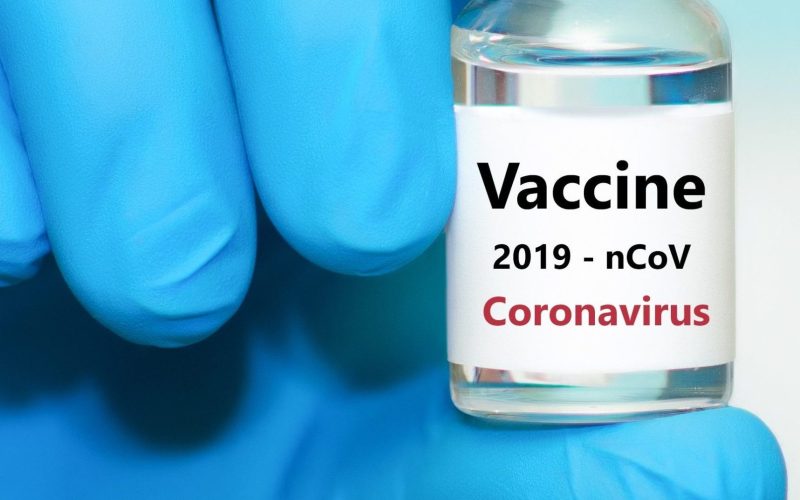As soon as vaccination against COVID-19 on a large scale is available, one should be able to monitor the efficacy and possible side effects of the various vaccines, says Miriam Sturkenboom. She is one of the Utrecht project leaders within the ACCESS project who, together with many scientists, have to ensure that Europe is prepared for this in good time.
More than a hundred candidate vaccines against COVID-19 are under development worldwide. About 10 are already being tested on a small scale in humans, especially in China and the USA. Since vaccines seem to be the only real solution to the corona pandemic, including the additional limitations in daily life, there is enormous pressure to get them onto the market. “Normally, the development of a vaccine takes about 10 to 15 years, now it has to be done within a year,” says Miriam Sturkenboom, professor of Observational Data Analysis and working at UMC Utrecht. “The developers do not skip any steps, but they accelerate each individual step. If a vaccine would enter the market in due time, it will probably only have been tested in several thousands of people. Due to the short lead time, the research is limited and certain subgroups such as the elderly, pregnant women and children may hardly be included in the studies.”
The big question then is what the so-called benefit-risk balance of these vaccines will be after they have entered the market. In other words: how efficacious are they in a real world situation? Do they have side effects and if so, which ones? And: is the relationship between efficacy and risks perhaps different for certain subgroups? Miriam: “What you need to answer such questions quickly and properly would be a large-scale – European – infrastructure of data access, people, knowledge and tools, which is financed. If there is a massive vaccination against COVID-19, everything must be ready to monitor the efficacy and safety of those vaccines.”
The ACCESS project (Vaccine Covid-19 monitoring ReadinESS) is to prepare Europe for this in the coming 6 months. The European Medicines Agency (EMA) has signed a contract with the European Pharmacoepidemiology & Pharmacovigilance Research Network and the Vaccine Monitoring Collaboration for Europe. UMC Utrecht and Utrecht University (UU) play a leading role in these networks. The ACCESS project is therefore led by Miriam in collaboration with Olaf Klungel, professor of Pharmacoepidemiological Methods at UU. The Dutch involvement in the project is significant, because the National Institute for Public Health and the Environment (RIVM), the side effects center Lareb and the PHARMO Institute also play an important role.
Another important cooperation partner is VAC4EU. Miriam: “VAC4EU is a European non-profit association that organizations can join. That is a good concept to effectuate a long-term cooperation. Already 22 organizations are participating and new ones are still registering. This creates a collaboration of public, relatively independent parties. ”For example, VAC4EU has access through its affiliated members to anonymous health data of more than 100 million Europeans, which can be analyzed in a harmonized manner in the countries themselves. “It is important that we can quickly analyze and exchange these outcomes when vaccination is started, so we continuously know where we stand.”
If a COVID-19 vaccine is approved by EMA, the manufacturer will distribute it in countries where they have sold it. Miriam: “Each country has its own system to track how efficacious and safe such a vaccine is, but most countries are too small to measure safety properly. Suppose that vaccine 1 is used in the Netherlands, vaccine 2 in Denmark and vaccines 3 and 4 in Germany. We can learn better from each other when we work together. In a European context, we can share expertise: some countries have excellent vaccine experts and others have excellent specialists in data analysis.” Another advantage of collaboration is shared protocols. “Certain ingredients – the so-called vaccine platform – may be the same in vaccines 1 and 4, for example, but if everyone uses different measurement methods, the results cannot be compared. Now we are making common protocols on how to measure the efficacy and safety of a vaccine, which are used locally. This allows us to quickly liaise with EMA and evaluate the benefit-risk ratio.”
Today the ACCESS project starts. The entire infrastructure is planned to be completed in six months. This means that protocols are ready, that the necessary big data is accessible and usable, people are trained and able to find each other, and the necessary tools are ready (see, for example, the VAC4EU toolbox). The preparations also includes calculations of how often certain syndromes normally occur, so without vaccination. Miriam: “We will calculate for 100 million people in Europe how often without vaccination serious diseases such as acute respiratory distress syndrome, anaphylactic shock and Guillain-Barré syndrome occur. This is essential in order to properly interpret reports of adverse reactions that occur after the vaccines have been introduced. When we start mass vaccination, for example in the elderly and health care workers, we can quickly see if more cases of disease are reported than we would expect. We are still compiling the list of relevant conditions for which we want to make these calculations together with WHO and EMA.”
“This is actually a European success story,” says Miriam. The basis for what we can do now was laid after the Mexican flu pandemic in 2009. This has led to the insight that a European infrastructure to monitor vaccines is really necessary. In recent years this has been designed and tested in the IMI-ADVANCE project, which eventually resulted in VAC4EU. We are now harvest the benefits: what we have developed then, we can now deploy and expand.
